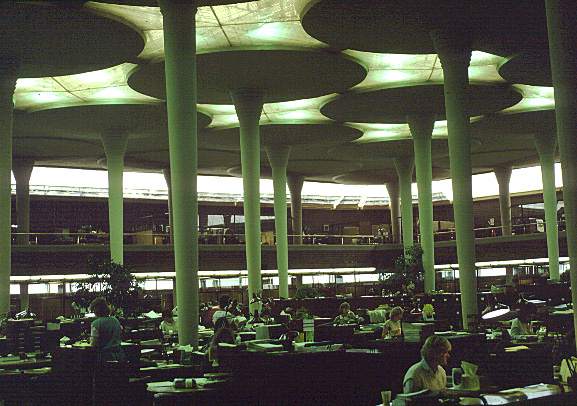Posts Tagged ‘Problem Definition’
Creative Problem Creation
 Problems get a bad rap. We’re all clear on the negativity around problems, but we don’t appreciate their positive character. It’s time we use their powers for good.
Problems get a bad rap. We’re all clear on the negativity around problems, but we don’t appreciate their positive character. It’s time we use their powers for good.
One of the least popular characteristics of problems is their selfishness. Like the friend who shows up for dinner unannounced, problems, left to their own, care only about their calendar. But to overcome this shortcoming and harness their energy, we can create them to fit our time table.
An important strong suit of problems is their ability to create focus. When the VP has a problem, everybody has a problem. And it’s this persuasive power of problems that focuses the organization on a solution – resources, alignment, and creativity on demand.
I propose we bring problems to life on our own terms to create new thinking; to creatively fabricate problems to generate laser-focused thinking in the direction of our choice; to imagine what could be and create the right problems to get us there. Creativity on demand.
The most provocative and productive problems to manufacture are those that remove inherent goodness of your products or that outlaw their physical fundamentals. Like putting your thumb over a hose, these problems spray high velocity thinking in unpredictable directions. Here are some examples:
- Big coffee pot can make only one cup – single-cup brewer industry.
- Speedboats cannot carry multiple passengers – personal water craft industry.
- Lights must illuminate only a small area – LED proliferation.
- Sturdy running shoes must be floppy – bare foot running shoe movement.
- Desktop computers must be mobile – laptop industry.
- Stiff, wear-like-iron dungarees must be worn out – faded/distressed jean movement.
- Eye glasses cannot rest on the nose – contact lenses.
- Pencils cannot be sharpened – mechanical pencils.
- Laser printers must be slow – home printer industry.
Sure, these examples were reverse engineered. But take a minute to walk back in time and sit in those industries. What if back then you created those problems for yourself? What if you create them tomorrow?
The thinking in the post is strongly shaped by Jeffrey Paul Baumgartner’s Anti Conventional Thinking (ACT).
Mindset for Doing New
 The more work I do with innovation, the more I believe mindset is the most important thing. Here’s what I believe:
The more work I do with innovation, the more I believe mindset is the most important thing. Here’s what I believe:
Doing new doesn’t take a lot of time; it’s getting your mind ready that takes time.
Engineers must get over their fear of doing new.
Without a problem there can be no newness.
Problem definition is the most important part of problem solving.
If you believe it can work or it can’t, you’re right.
Activity is different from progress.
Thinking is progress.
In short, I believe state-of-the-art is limited by state-of-mind.
Innovation, Technical Risk, and Schedule Risk
There is a healthy tension between level of improvement, or level of innovation, and time to market. Marketing wants radical improvement, infinitely short project schedules, and no change to the product. Engineers want to sign up for the minimum level of improvement, project schedules sufficiently long to study everything to death, and want to change everything about the new product. It’s healthy because there is balance – both are pulling equally hard in opposite directions and things end up somewhere in the middle. It’s not a stress-free environment, but it’s not too bad. But, sometimes the tension is unhealthy.
There are two flavors of unhealthy tension. First is when engineering has too much pull; they (we) sandbag on product performance and project timelines and change the design willy-nilly simply because they can (and it’s fun). The results are long project timelines, highly innovative designs that don’t work well, a lack of product robustness, and a boatload of new parts and assemblies. (Product complexity.) Second is when Marketing has too much pull; they ask for radical improvement in product functionality with project timelines too short for the level of innovation, and tightly constrain product changes such that solutions are not within the constraints. The results are long project timelines and un-innovative designs that don’t meet product specifications. (The solutions are outside the constraints.) Both sides are at fault in both scenarios. There are no clean hands.
What are the fundamentals behind all this gamesmanship? For engineering it’s technical risk; for marketing it’s schedule risk. Engineering minimizes what it signs up for in order to reduce technical risk and petitions for long project timelines to reduce it. Marketing minimizes product changes (constraints) to reduce schedule risk and petitions for short project timelines to reduce it. (Product development teams work harder with short schedules.) Something’s got to change. Read the rest of this entry »
Engineering your way out of the recession
 Like you, I have been thinking a lot about the recession. We all want to know how to move ourselves to the other side, where things are somewhat normal (the old normal, not the new one). Like usual, my mind immediately goes to products. To me, having the right products is vital to pulling ourselves out of this thing. There is nothing novel in this thinking; I think we all agree that products are important. But, there are two follow-on questions that are important. First, what makes products “right” to move you quickly to the other side? Second, do you have the capability to engineer the “right” products?
Like you, I have been thinking a lot about the recession. We all want to know how to move ourselves to the other side, where things are somewhat normal (the old normal, not the new one). Like usual, my mind immediately goes to products. To me, having the right products is vital to pulling ourselves out of this thing. There is nothing novel in this thinking; I think we all agree that products are important. But, there are two follow-on questions that are important. First, what makes products “right” to move you quickly to the other side? Second, do you have the capability to engineer the “right” products?
The first question – what makes products “right” for these times? Capacity is important to understanding what makes products right. Capacity utilization is at record lows with most industries suffering from a significant capacity glut. With decreased sales and idle machines, customers are no longer interested in products that improve productivity of their existing product lines because they can simply run their idle machines more. And, they are not interested in buying more capacity (your products) at a reduced price. They will simply run their idle machines more. You can’t offer an improvement of your same old product that enables customers to make their same old products a bit faster and you can’t offer them your same old products at a lower price. However, you can sell them products that enable them to capture business they currently do not have. For example, enable them to manufacture products that their idle machines CANNOT make at all. To do that means your new products must do something radically different than before; they must have radically improved functionality or radically new features. This is what makes products right for these times.
On to the second question – do you have the capability to engineer the right products? Read the rest of this entry »
 Mike Shipulski
Mike Shipulski